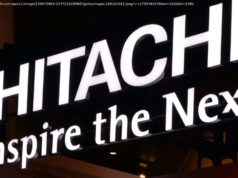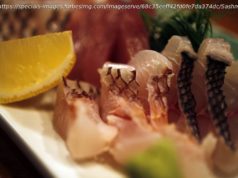The 1945 film „Momotaro, “ Japan’s first animated feature, gets a U. S. DVD release. The propaganda film had been ordered destroyed.
The first Japanese animated feature, the 1945 propaganda film “Momotaro: Sacred Sailors, ” is being released on DVD and video in the U. S. Although the occupation forces ordered the film destroyed after World War II, a copy somehow survived and has been restored.
The film is noteworthy in a number of ways, especially its stereotypical images of Causcasians — the flip side of the racist depictions of the Japanese in American wartime cartoons.
Anime enjoys a huge following in the U. S. and around the world, but the first Japanese animated feature had little in common with more recent favorites like “Pokémon” or “Sailor Moon.” Mitsuyo Seo’s 74-minute “Momataro: Sacred Sailors” (Momotaro Umi no Shinpei) was meant to support the war effort with its depiction of Japanese forces conquering ineffectual Caucasian colonials
During the war, Japanese animators, like their U. S. counterparts, made military training films and propaganda shorts that were shown theatrically. Seo had already made “Momotaro’s Sea Eagles” (1942) , a 37-minute featurette showing an animal army attacking Pearl Harbor, when the Ministry of the Navy commissioned “Sacred Sailors.”
For decades, historians believed the film was lost — any prints that survived the firebombing of Tokyo would have been destroyed as militaristic propaganda by the Allied forces. But one somehow survived. Restoration began in late 2015, to mark the 120th anniversary of Shochiku Studio and the 70 th anniversary of the end of war. Funimation is releasing the film on Blu-ray and DVD in the U. S.
In the most popular Japanese folk tale, Momotaro, the boy born from a giant peach, and his animal companions defeat demons on a nearby island and reclaim their stolen treasure. The character appeared regularly in wartime propaganda.
“Sacred Sailors” opens with animal children in a dreamily beautiful Japan bidding farewell to their dashing relatives who have completed their military training. The young officers move to a tropical Pacific island, where monkeys, elephants, rhinos, etc. cheerfully build hangars for the Japanese Navy and learn the Japanese alphabet. This idealized scenario presents the official ideology that Japan was liberating Asia from oppressive Western colonialism.
Momotaro leads his animal troops in a parachute assault on the mythical “Kingdom of Goa” that was conquered by Caucasians long ago. The animal troops quickly disarm enemy tanks and machine gun nests. The white defenders — who have demon’s horns — flap their arms and dither before surrendering to Momotaro. Among the troops is a crudely drawn version of Popeye, who drops a can of spinach as he raises his hands over his head. The film concludes with the Japanese children imitating the heroic parachutists by jumping from a tree onto a map of the United States.
One of the most striking features of “Sacred Sailors” is its use of ethnic stereotypes. The Caucasian characters have huge noses, large eyes and flabby bodies. These images provide a striking counterpoint to American propaganda cartoons like “Bugs Bunny Nips the Nips” (1944) . Although Hollywood animators caricatured individual European Fascist leaders — Hitler, Mussolini, Goebbels — they drew the Japanese enemy as a racial stereotype with chrome yellow skin, buck teeth and slanting eyes.
Seo demanded a large budget and crew for “Sacred Sailors, ” but the film was created under difficult circumstances. The material used to make cels was in such short supply, the artists had to wash and reuse them, giving some scenes a muddy look. Although no documentation exists, rumors persist that the voices of the British characters were provided by prisoners of war. Scholars agree that the voices belong to native English speakers, not Japanese actors.
Some sequences in the film boast a poetic grace, notably the striking parachute assault, which likens the falling soldiers to dandelion puffs. Other scenes include elements borrowed from Western sources. The singing animals at work show the influence of Disney’s “Snow White” and “Dumbo.” A striking flashback sequence recounting the seizure of Goa is done in cutouts modeled on Lotte Reiniger’s “The Adventures of Prince Achmed” (Germany, 1926) .
It’s not clear how many people saw “Sacred Sailors” or what effect it had on national morale, although it was reportedly screened at the Imperial Palace for the crown prince, now Emperor Akihito. When it was released, the victory it depicted was obviously a fantasy. Tokyo had already suffered extensive bombing and the invasion of Okinawa was underway. Most children had been evacuated to the countryside; teenagers who remained in the cities were conscripted for factory work and had little time for amusements.
“I suspect the film was shown primarily to the military, ” said John Dower, who won the National Book Critics Circle Award for “War Without Mercy: Race & Power in Pacific War, ” in a phone interview. “The subtitles for the passages in English were clearly not aimed at children: the Kanji characters are too complicated and sophisticated.”
The influence of “Sacred Sailors” on modern anime is indirect. Osamu Tezuka, who played a key role in the creation of the postwar Japanese animation industry, saw the film as a teenager. He later wrote, “I sat in the freezing Shochiku-za movie theater, which had somehow survived the bombings, and watched the film and I was so impressed, I began weeping uncontrollably. The lyricism and childlike spirit in all the reels were like a warm light, illuminating my mummified spirit, depleted of both hope and dreams. I swore then: ‘I will someday make my own animated films.’ ”
calendar@latimes.com
Start
United States
USA — Japan "Momotaro, " a Japanese World War II-era propaganda animation film, finally gets...






